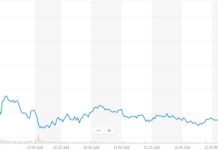[ad_1]
In a keynote capping off Money20/20 USA 2018, Ripple Executive Chairman and Co-Founder Chris Larsen sat down for a fireside chat with Arjan Schütte, the Founder and Managing Partner of Core Innovation Capital.
Larsen reflected on his experience as both an entrepreneur and a business leader as he offered perspectives on a variety of topics, including Silicon Valley disruption, regulation of digital assets and what it means to build the Internet of Value.
First pressed by Schütte on his philosophy towards developing new technology, Larsen explained that there’s “a difference between wanting to do good and not wanting to do bad.” This a philosophy, he noted, was laid out well by President Clinton during his keynote at Swell 2018. He continued by explaining that the unchecked growth of new technology originating in Silicon Valley can often feel like a threat to portions of society.
“There is a ‘techlash’ going on, for sure. Silicon Valley has missed the boat,” Larsen said. “They’ve moved fast and broke things and didn’t worry about the consequences. This is where FinTech has struggled. Pure code is one thing, but it has to also be compliant and regulated. Technology is embedded in everything these days, and people are scared. They don’t want to hear how you’re going to break things.”
To fix that, Larsen said that he believes startups and tech companies need to have more empathy. He went on to suggest that teams should think about disruption from a different perspective — one that requires them to be smart, but also thoughtful. When asked by Schütte about the impact blockchain has, Larsen acknowledged it is a disruptive technology. However, he clarified that while the technology itself could disrupt, teams building on it should not.
This philosophy has become a central approach to Larsen’s companies. He cited Ripple for Good, the giving arm of Ripple, as example of the right approach to building while still being inclusive and supportive to the greater global community. Larsen said that the industry as a whole has fallen short in addressing digital assets’ potential to do harm.
Larsen went on to say that the industry could learn from projects like Thorn, which uses new technology to stop the exploitation of children on the Internet. He argued this was part of digital assets “earning their way in the world,” and it was essential for new projects to make positive change by working with the traditional financial system, not disrupting it.
“Working within the system. A big part of stopping this fetish for disruption is getting involved in the industry,” Larsen remarked. “Work with banks. By working with the system, you are automatically confronted by what the concerns are. If you’re only on your own path, you don’t see what these issues are.”
Larsen explained that thoughtful regulation was critical to protecting consumers and seeing broader positive impacts from the technology. He believes that digital assets, could help prevent the next financial crisis by solving the global liquidity problem. Larsen cited the digital asset XRP as one such example, due to its ability to provide instant transfers of value across borders without a pre-funded nostro account. The major threat to realizing these benefits Larsen argued, was overregulation.
Despite the challenges, Larsen still believes that digital assets will be a driving force for positive change in the financial industry and beyond. An impact he hopes can achieve through the Ripple mission of enabling the Internet of Value, a world where money can move seamlessly across borders like information does today. Larsen believes the journey to this end goal will have a steep learning curve for digital assets and their associated projects.
He remarked, “Ninety percent of what we see today [in digital assets] won’t exist in ten years time, but the other ten percent of it will change the world.”
(function(d, s, id) {
var js, fjs = d.getElementsByTagName(s)[0];
if (d.getElementById(id)) return;
js = d.createElement(s); js.id = id;
js.src = “http://connect.facebook.net/en_US/sdk.js#xfbml=1&version=v2.3&appId=1419450551711438”;
fjs.parentNode.insertBefore(js, fjs);
}(document, “script”, “facebook-jssdk”));
[ad_2]
Source link




